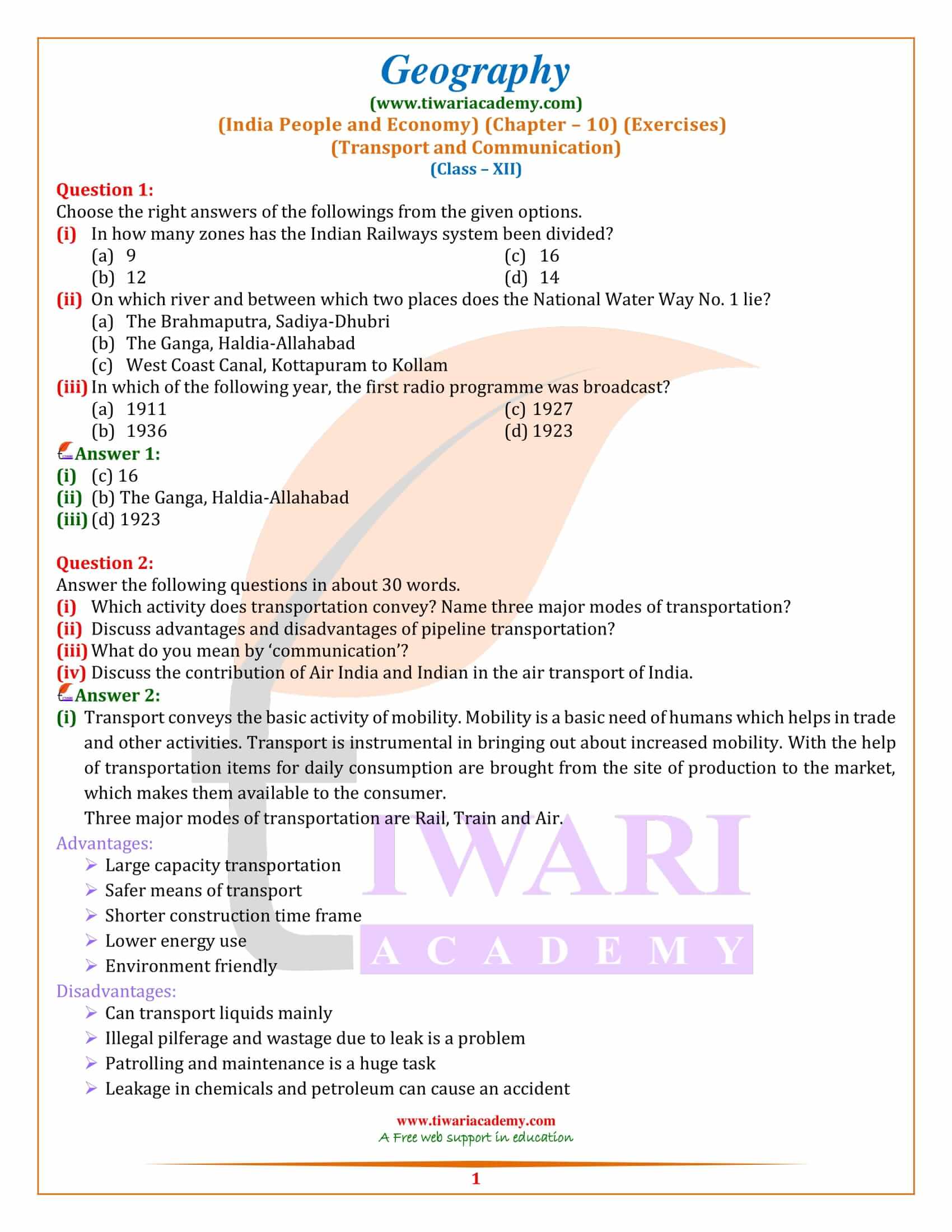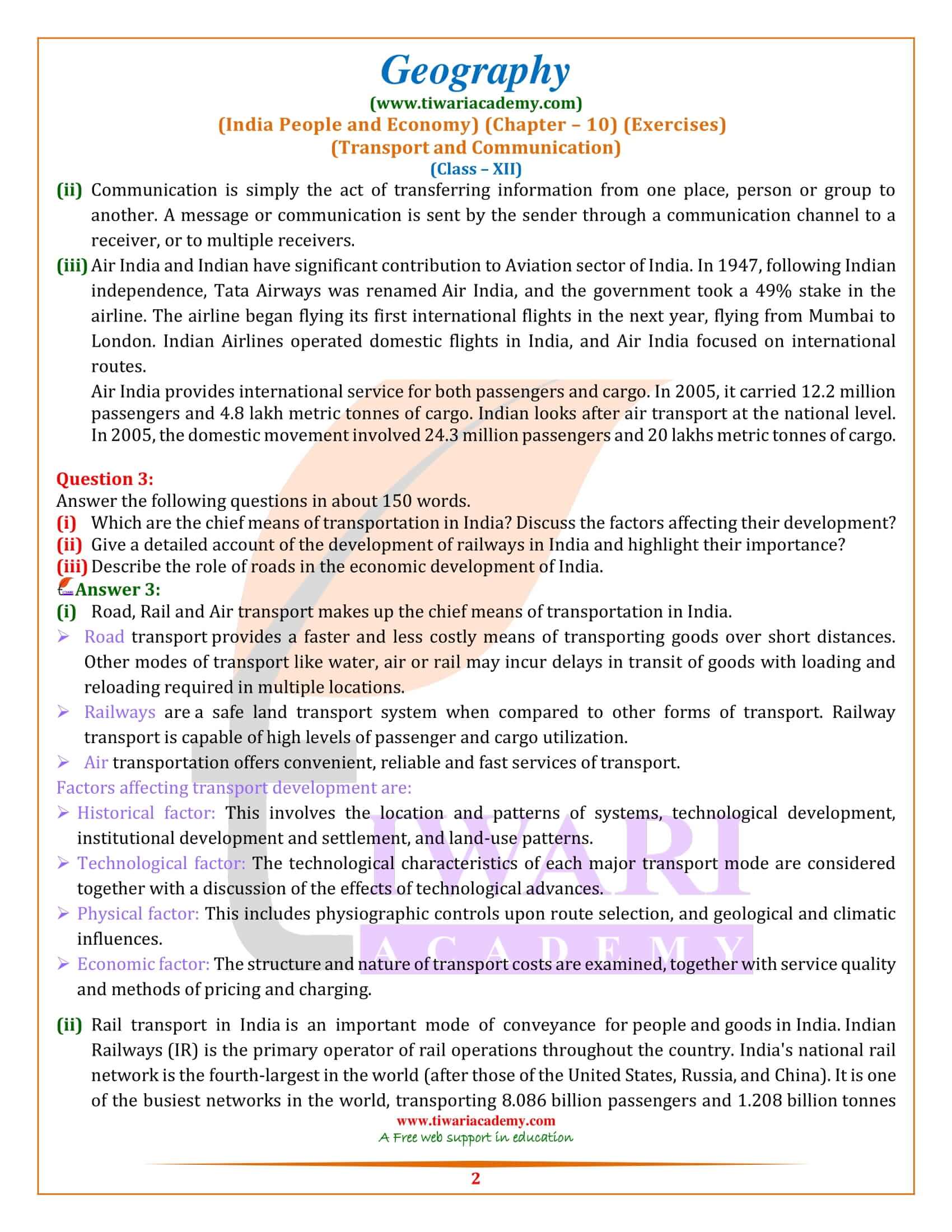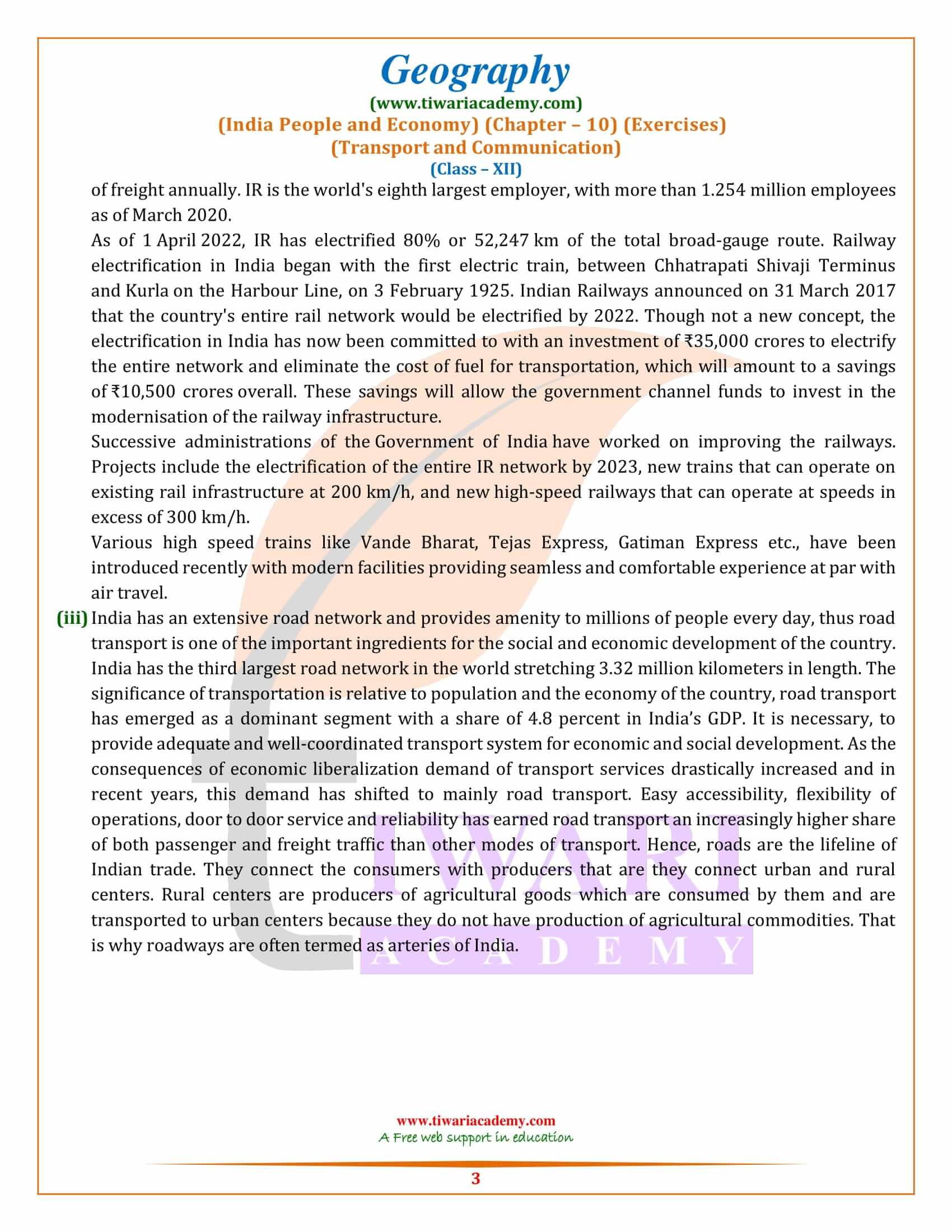NCERT Solutions for Class 12 Geography Chapter 10 Transport and Communication prepared and modified in Hindi and English Medium for 2025-26 academic session. Students of class 12 can practice here exercises and extra questions of chapter 10 of India People and Economy Unit VI.
NCERT Solutions for Class 12 Geography Chapter 10
Class 12 Geography Chapter 10 Transport and Communication Question Answers
- Class 12 Geography Chapter 10 NCERT Solutions
- Class 12 Geography Chapter 10 MCQ with Answers
- Class 12 Geography Chapter 10 Important Questions
- Class 12 Geography Chapter 10 Hindi Medium
- Class 12 Geography Chapter 10 NCERT Book
- Class 12 Geography all Chapters Solutions
- Class 12 all Subjects NCERT Solutions
Which activity does transportation convey? Name three major modes of transportation?
Transport conveys the basic activity of mobility. Mobility is a basic need of humans which helps in trade and other activities. Transport is instrumental in bringing out about increased mobility. With the help of transportation items for daily consumption are brought from the site of production to the market, which makes them available to the consumer. Three major modes of transportation are Rail, Train and Air.
Advantages:
- Large capacity transportation
- Safer means of transport
- Shorter construction time frame
- Lower energy use
- Environment friendly.
Disadvantages:
- Can transport liquids mainly
- Illegal pilferage and wastage due to leak is a problem
- Patrolling and maintenance is a huge task
- Leakage in chemicals and petroleum can cause an accident
What do you mean by communication?
Communication is simply the act of transferring information from one place, person or group to another. A message or communication is sent by the sender through a communication channel to a receiver, or to multiple receivers.
Class 12 Geography Chapter 10 MCQ
In how many zones has the Indian Railways system been divided?
On which river and between which two places does the National Water Way No. 1 lie?
In which of the following year, the first radio programme was broadcast?
Discuss the contribution of Air India and Indian in the air transport of India.
Air India and Indian have significant contribution to Aviation sector of India. In 1947, following Indian independence, Tata Airways was renamed Air India, and the government took a 49% stake in the airline. The airline began flying its first international flights in the next year, flying from Mumbai to London. Indian Airlines operated domestic flights in India, and Air India focused on international routes.
Air India provides international service for both passengers and cargo. In 2005, it carried 12.2 million passengers and 4.8 lakh metric tonnes of cargo. Indian looks after air transport at the national level. In 2005, the domestic movement involved 24.3 million passengers and 20 lakhs metric tonnes of cargo.
Which are the chief means of transportation in India? Discuss the factors affecting their development?
Road, Rail and Air transport makes up the chief means of transportation in India.
- Road transport provides a faster and less costly means of transporting goods over short distances. Other modes of transport like water, air or rail may incur delays in transit of goods with loading and reloading required in multiple locations.
- Railways are a safe land transport system when compared to other forms of transport. Railway transport is capable of high levels of passenger and cargo utilization.
- Air transportation offers convenient, reliable and fast services of transport.
Factors affecting transport development are:
- Historical factor: This involves the location and patterns of systems, technological development, institutional development and settlement, and land-use patterns.
- Technological factor: The technological characteristics of each major transport mode are considered together with a discussion of the effects of technological advances.
- Physical factor: This includes physiographic controls upon route selection, and geological and climatic influences.
- Economic factor: The structure and nature of transport costs are examined, together with service quality and methods of pricing and charging.
Describe the role of roads in the economic development of India.
India has an extensive road network and provides amenity to millions of people every day, thus road transport is one of the important ingredients for the social and economic development of the country. India has the third largest road network in the world stretching 3.32 million kilometers in length. The significance of transportation is relative to population and the economy of the country, road transport has emerged as a dominant segment with a share of 4.8 percent in India’s GDP.
It is necessary, to provide adequate and well-coordinated transport system for economic and social development. As the consequences of economic liberalization demand of transport services drastically increased and in recent years, this demand has shifted to mainly road transport. Easy accessibility, flexibility of operations, door to door service and reliability has earned road transport an increasingly higher share of both passenger and freight traffic than other modes of transport. Hence, roads are the lifeline of Indian trade.
They connect the consumers with producers that are they connect urban and rural centers. Rural centers are producers of agricultural goods which are consumed by them and are transported to urban centers because they do not have production of agricultural commodities. That is why roadways are often termed as arteries of India.




